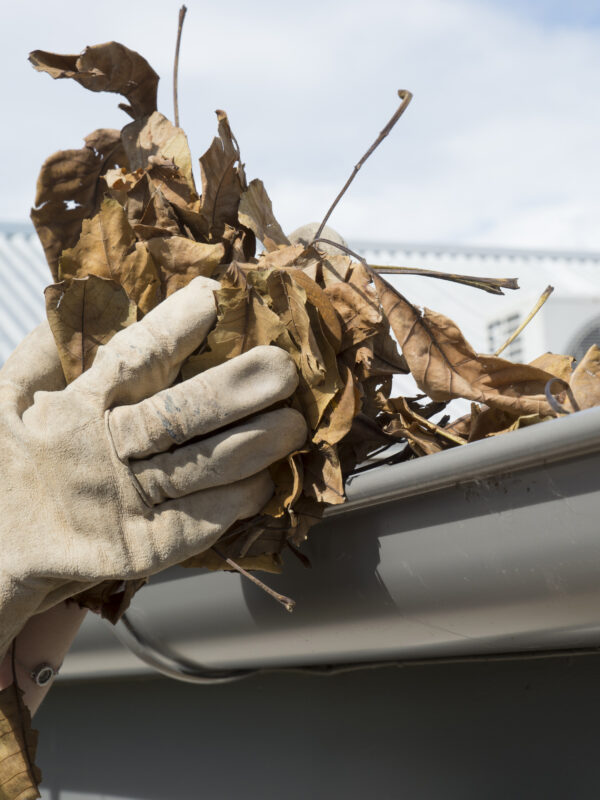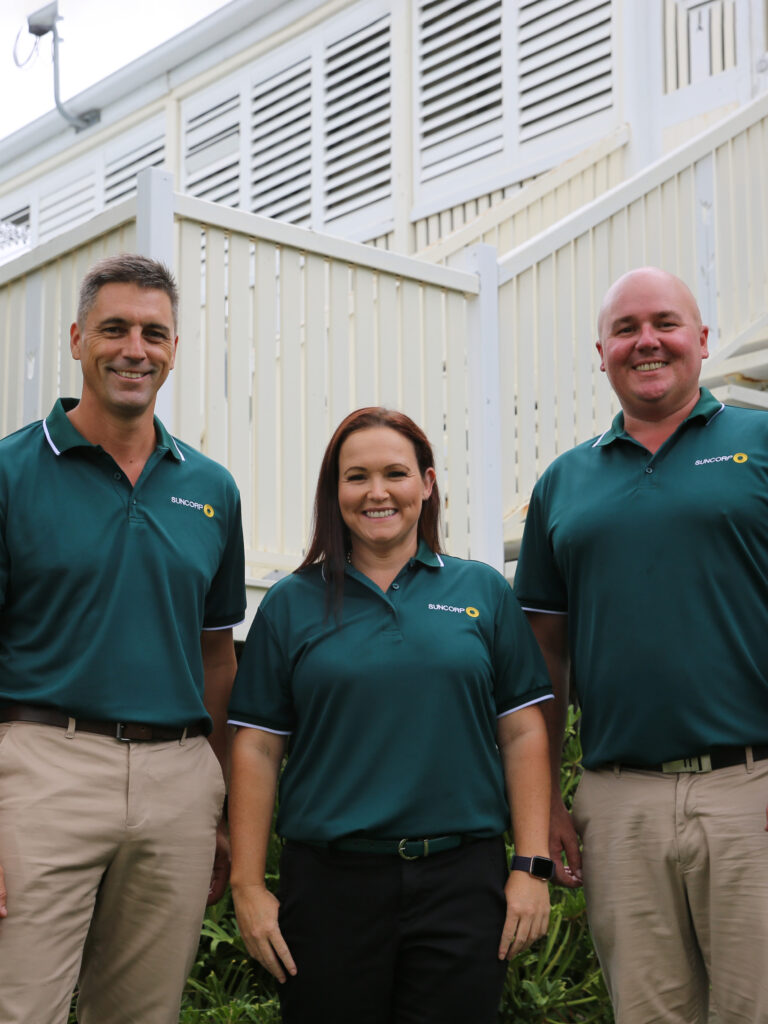
When it comes to selecting a roof, the material that you choose can have a vital impact in the event of a bushfire.
For Queensland’s unpredictable weather, one of the safest choices is to use steel framing in combination with the right insulation. Together this creates a strong roof that is protected from combustible materials entering the cavity. Fortunately, all roof claddings used in Australia are already non-combustible, but you could also consider using non-combustible eave and fascia linings for extra protection.
To try and make your roof even more resilient in a fire, consider keeping it unfinished, as paint can blister and burn in a fire. Choosing to leave your roof unpainted, as featured on One House, can not only help make the home more resilient to extreme weather, but it means the roof likely won’t need repainting after an extreme weather event.
Updating your gutters is an important consideration as they tend to catch debris and highly flammable materials like leaves, and flames can accelerate wildly if they catch fire and impact your roofing.
Installing PVC plastic gutter fixings, just like those on One House, could help mitigate this risk.
In the event of a fire, these fixings are designed to melt, and the gutters become ‘sacrificial’, falling away from the house. The removal of these gutters can help protect the home from embers and help reduce the likelihood of ash entering the back-up water supply, affecting its quality. If you’re not able to change your gutters, you should still make sure they are clean and clear so check them regularly to ensure there isn’t any build up.
You may want to consider installing a spray system in the landscape surrounding your home. One bonus of this is that it can double as a watering system. To make it useful in a bushfire the spray heads should be the type that direct water effectively in windy conditions. The water should be delivered to vegetation and ground areas around your house as well as wetting parts of the house itself such as gutters and any surfaces where wind-blown debris might accumulate.
Importantly, these spray systems are only as reliable as their water supply. Unfortunately, many residents experience either reduced or no water pressure and electricity during bushfire events – but by having rainwater stored onsite and battery backup power to run the electric pumps, these systems can perform throughout the bushfire event. They also come in handy after the bushfire event while the power network is being reinstated.
These sprinkler systems can do more than help put out bushfires. When installed inside, they also reduce the risk of injury, as they can dramatically reduce toxic smoke and heat from internal house fires. This gives people in the home more time to evacuate safely as well as potentially avoiding total house loss.
For more information, see the Queensland Reconstruction Authority’s (QRA) Bushfire Resilient Building Guidance.
The information is intended to be of a general nature only. Subject to any rights you may have under any law, we do not accept any legal responsibility for any loss or damage, including loss of business or profits or any other indirect loss, incurred as a result of reliance upon it – please make your own enquiries.

AUTHOR:
DATE:
From the simple to the complex, see which upgrades can help better protect your home.

An Australian first for Home Insurance. It’s our commitment to help create more resilient homes. It means that if your home is substantially damaged, we’ll rebuild it stronger with recommended resilience options up to $10,000, in addition to your sum insured, all designed to help withstand severe weather5.

Helping build a more resilient Queensland together.
Insurance is issued by AAI Limited ABN 48 005 297 807 (AAI) trading as Suncorp Insurance. Please read the relevant Product Disclosure Statement before buying any insurance products. The Target Market Determination is also available. The information is intended to be of a general nature only. Subject to any rights you may have under any law, we do not accept any legal responsibility for any loss or damage, including loss of business or profits or any other indirect loss, incurred as a result of reliance upon it – please make your own enquiries.
4. A premium reduction may be available to eligible Suncorp Home or Landlord Insurance customers, with properties above tropic of Capricorn, within 100km from the coast and with certain risk mitigation measures. Eligibility criteria, terms and conditions apply. Find out more.
5. Cover applies to claims with building damage over $50,000 or 10% of sum insured, whichever is highest. Resilience improvements are tiered according to level of cover up to $10,000. Limits, conditions and exclusions apply. Please read the relevant Product Disclosure Statement before you make any decision regarding this product.
COOKIE AND DATA POLICY
We use cookies and other related technologies to improve and tailor your website experience. See our Cookie and Data Policy. This policy provides information about how Suncorp collects and uses data related to your online activity, and how you can choose to remain anonymous.